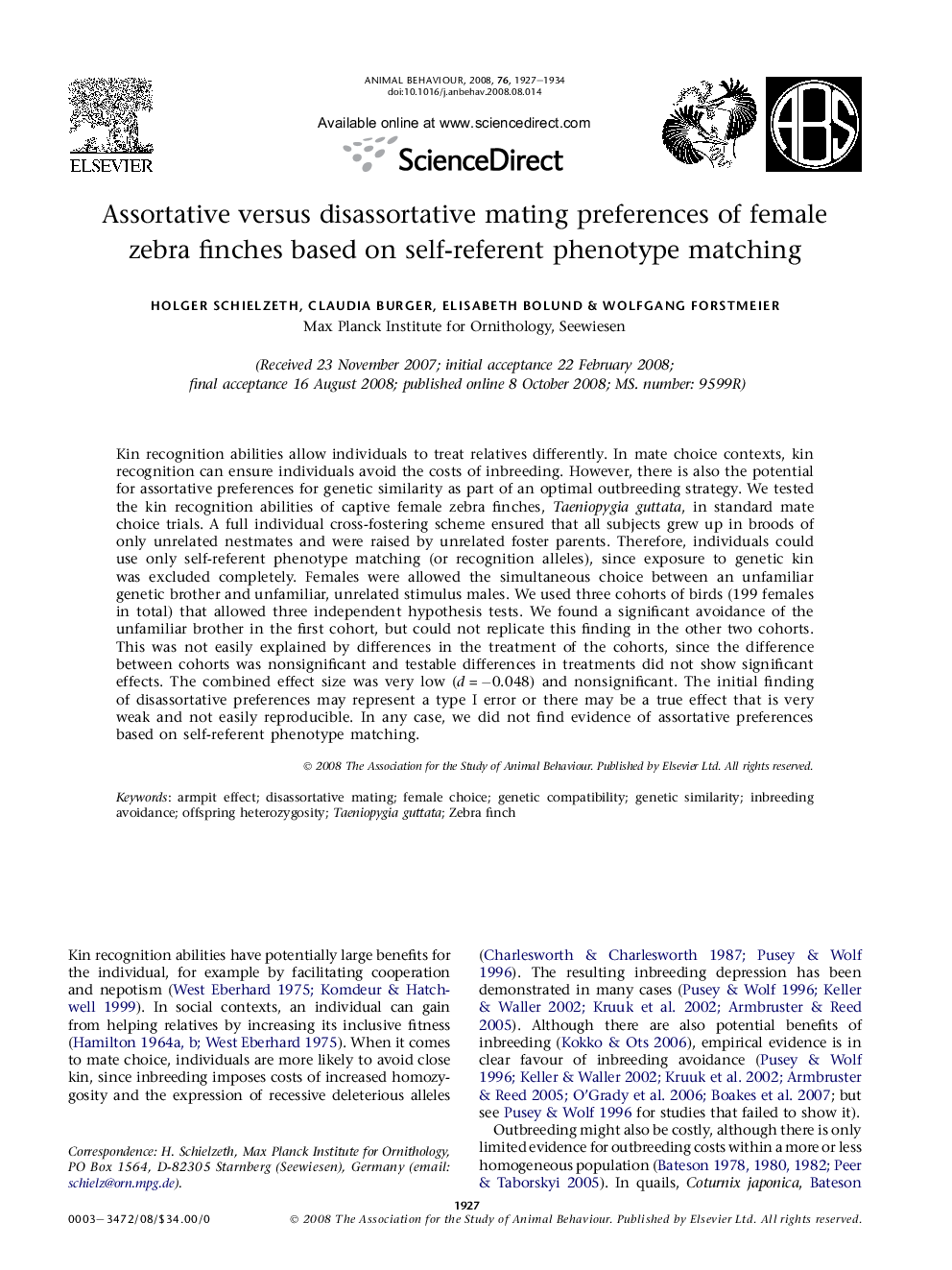| Article ID | Journal | Published Year | Pages | File Type |
|---|---|---|---|---|
| 2418496 | Animal Behaviour | 2008 | 8 Pages |
Kin recognition abilities allow individuals to treat relatives differently. In mate choice contexts, kin recognition can ensure individuals avoid the costs of inbreeding. However, there is also the potential for assortative preferences for genetic similarity as part of an optimal outbreeding strategy. We tested the kin recognition abilities of captive female zebra finches, Taeniopygia guttata, in standard mate choice trials. A full individual cross-fostering scheme ensured that all subjects grew up in broods of only unrelated nestmates and were raised by unrelated foster parents. Therefore, individuals could use only self-referent phenotype matching (or recognition alleles), since exposure to genetic kin was excluded completely. Females were allowed the simultaneous choice between an unfamiliar genetic brother and unfamiliar, unrelated stimulus males. We used three cohorts of birds (199 females in total) that allowed three independent hypothesis tests. We found a significant avoidance of the unfamiliar brother in the first cohort, but could not replicate this finding in the other two cohorts. This was not easily explained by differences in the treatment of the cohorts, since the difference between cohorts was nonsignificant and testable differences in treatments did not show significant effects. The combined effect size was very low (d = −0.048) and nonsignificant. The initial finding of disassortative preferences may represent a type I error or there may be a true effect that is very weak and not easily reproducible. In any case, we did not find evidence of assortative preferences based on self-referent phenotype matching.
